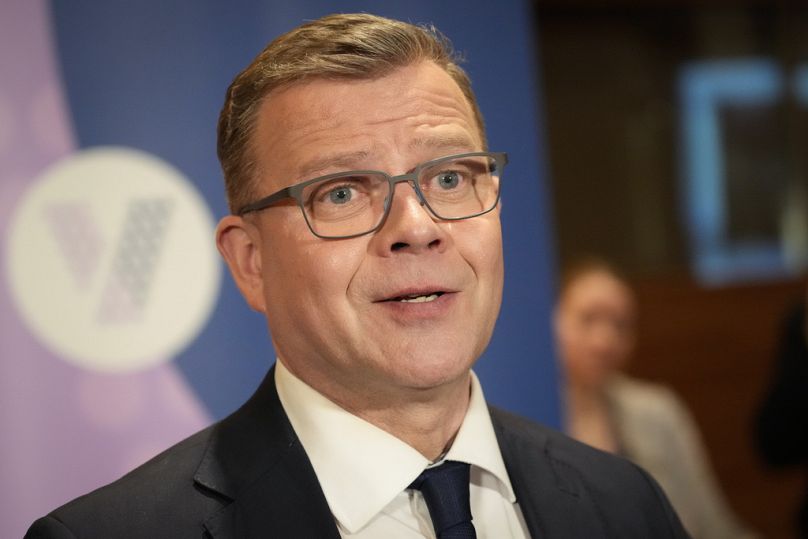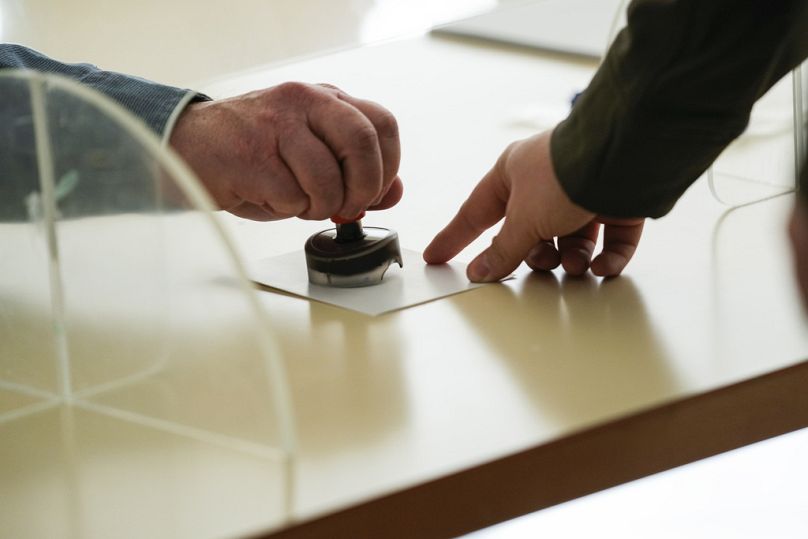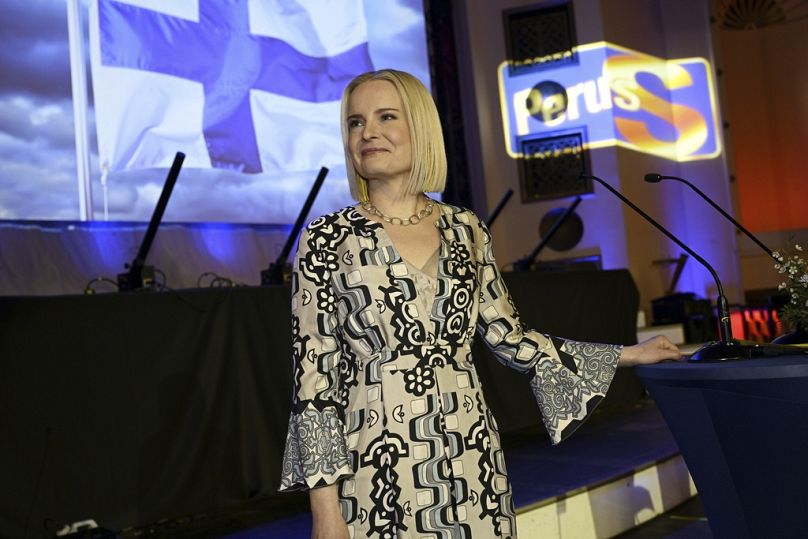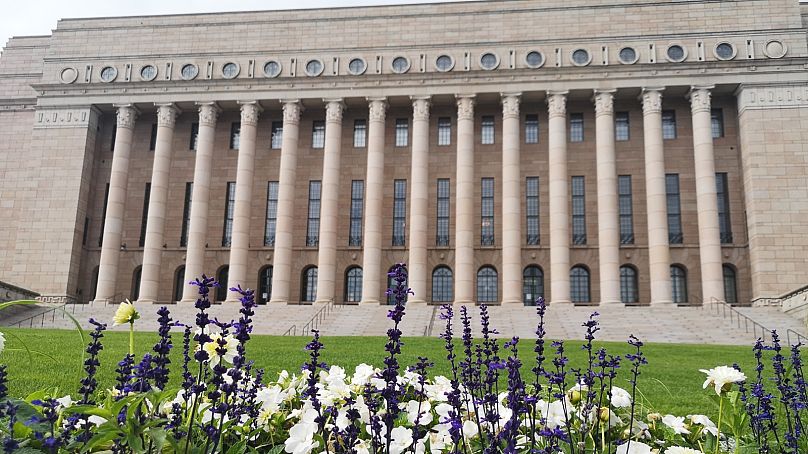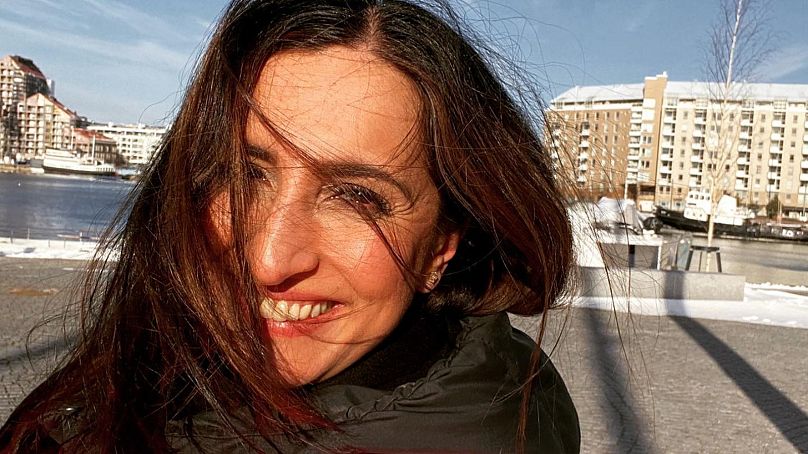The National Coalition Party will now have the chance to form the next government, but faces challenges negotiating with far-right populists.
 ADVERTISEMENT
ADVERTISEMENT
The right-wing conservative National Coalition Party, known locally as Kokoomus, has swept to victory in the Finnish general elections, winning 48 seats in the 200-seat parliament.
The far-right populist Finns Party came second in Sunday's vote with 46 seats while Sanna Marin's left-wing Social Democrats came third with 43 seats: but the number of seats can be deceiving, when there is less than one percentage point separating the top three parties.
All three parties actually gained seats compared to the 2019 election but the result means Marin, who became the world's youngest head of government when she took the role, will no longer be prime minister, and at this stage it looks like her party could well be shut out of government completely.
So what are some of the key takeaways from this election so far?
1. Values matter, going forward
Kokoomus now has a values choice to make. Their most likely scenario would be to start preliminary talks to form a government with the second-place Finns Party in a so-called Blue-Black coalition. That would pull Finland much further to the right politically than the country has been before: (yes, the Finns Party were in government from 2015-2017 but it was a much less right-wing, and much less 'Trumpian' Finns Party at that time, which ended up splintering anyway.)
And Kokoomus will have to weigh up whether the country takes a reputational hit by having a far-right populist party in government, where several of the most popular figures have convictions for race-related offences (which, incidentally, they wear like a badge of honour).
Kokoomus might, or might not, be able to find enough common ground with the Finns Party (and a few others too: Christian Democrats, Liike Nyt, possibly the Centre Party or perhaps a little less likely the Swedish People's Party). If they can't find common ground -- especially over immigration, EU issues and climate change policies -- then Kokoomus could say "well, we gave it a shot, it didn't work out, and now we need to move on and try to form a government with other parties" which could result in a Blue-Red government with the Social Democrats.
In any case, it might suit the Finns Party not to be in government where they have to compromise and work constructively -- they might prefer to remain in opposition where they can shout from the sidelines.
There is some precedent though for Kokoomus to skip the second party completely and look to the Social Democrats to be the other big "anchor" party in their new government. And what is that precedent? Well in the 2019 election the roles were reversed, and the Social Democrats leap-frogged over Kokoomus in second place, and brought in other parties to form the government. But it seems that first and foremost, the election night winners Kokoomus need to sit down with the second place Finns Party and "put the cat on the table" as Finns say, or speak frankly about the options for governing together.
And how long will this take? It can easily take most of April and May. The one thing which is certain is that the whole process will be completed before the Midsummer holidays in June, a Finnish sacred cow (or would that be sacred reindeer?)
2. Biggest losers: Centre Party, Greens and Left Alliance
The biggest losers of the night were three of the middle-ranking Finnish parties, all of which had been part of Sanna Marin's five-party Red-Green coalition government.
When the advance voting figures came through at 20:00 EET on Sunday night, it looked as if the Centre Party - Keskusta - hadn't done as badly as polls had predicted, on course to lose just five MPs which was at the lower end of the disaster scale.
However that all changed with 99% of the votes counted and Keskusta has now lost eight MPs, recording their lowest-ever share of the vote but in percentage terms down less than 2.5 percentage points from 2019 so not as terrible as everyone expected.
The fate of current party leader Annika Saarikko - the third since the last election - hangs in the balance. Her predecessor quit on election night, but she might wait to see which way the wind is blowing with government negotiations before deciding what to do.
For decades the Centre Party were one of the big three Finnish political parties with a lot of clout both in and out of government. But their last put at running the government from 2015-2019 they've had a non-stop downward spiral in the polls. Their traditional agrarian base has been switching to vote for the Finns Party, a long-term trend, and they barely register in the capital region (but fare better in other regional cities it has to be said).
Support for the Left Alliance and Green League also crashed - both, but especially the Greens in Helsinki, losing voters to the Social Democrats. The Greens lost seven seats, and the Left Alliance lost five seats.
There's less to analyse here: being in a coalition with Sanna Marin's Social Democrats didn't help them in particular as she was certainly the star of that whole government. Left Alliance leader Li Andersson is one of the sharpest politicians in Finland and has been effective as education minister in the last four years so this result isn't really a reflection of her performance.
The Green's leader Maria Ohisalo is also a good politician, but maybe slotted into the wrong roles to let her shine. Ohisalo's background as a researcher into poverty issues could have been used effectively in light of the cost of living crisis: but as interior minister during the COVID pandemic she was often the face of bad news that borders were being kept closed; while as environment minister after maternity leave she was unlucky that the climate crisis never really broke through as an issue that voters warmed to (no pun intended) in the lead up to the campaign.
3. Female politicians were Finland's most popular
It should come as no surprise that in a Nordic country that strives for equality, women candidates did particularly well in Sunday's election.
The top three biggest vote-winners were women:
- Finns Party leader Riikka Purra pulled the most votes with 42,589 - six times the total she got in 2019.
- Sanna Marin got the second most votes with 35,623 - around 15,000 more votes than she got in 2019.
- Elina Valtonen from Kokoomus got the third most personal votes with 32,406.
In fact, 50% of the top 10 candidates with the most votes were women.
4. Changing of the guard in Finnish parliament
This election sees a huge change in parliament with 61 new MPs (or at least new at this election, some were MPs previously), which means more than 30% of the incoming parliament class will be 'freshmen'.
Among the influx of new lawmakers are seven MPs in their 30s, including two Finns Party politicians who have been dubbed "TikTok stars" by Finnish media for their use of social media platforms to springboard themselves into parliament.
There's another 13 MPs, new and returning, in their 30s as well so it's a relatively young parliament incoming.
However at the other end of the scale there are 20 MPs aged 60 or over, and the three oldest MPs in their 70s are all from the Social Democrats which does highlight a problem the party will have to address.
And with so many new members of parliament, it means a lot of departures: including two cabinet ministers from Sanna Marin's government; and Marin's immediate predecessor as PM, Antti Rinne, who won the last general election in 2019 for the Social Democrats.
5. Status quo for immigrant or minority background candidates
Finnish political parties, mainly on the left, again put many candidates with immigrant or minority backgrounds on the ballot but those numbers weren't reflected in the voting outcome.
In Central Finland Bella Forsgren held her seat for the Greens; while in Helsinki, Fatim Diarra is a new Green MP bucking the trend of losses for their party nationwide.
Nasima Razmyar, an immigrant from Afghanistan, got elected to parliament. She was an MP once before from 2015-2017 but left when she was voted onto Helsinki City Council and became one of the deputy mayors in the capital. She's now back in parliament again for the Social Democrats.
Sámi politician Mikkel Näkkäläjärvi also from the Social Democrats didn't quite win a seat in Lapland, but did well enough to become a reserve MP in case someone drops out. He had previously run for office at the last European Parliament elections in 2019.
But Left Alliance MP Suldan Said Ahmed, Finland's first MP of Somali origin failed to retain his seat, as did the Social Democrat's Hussein al-Taee, who moved to Finland from Iraq.
Other candidates like Turkish-born Ozan Yanar for the Greens, who was previously an MP from 2015-2019, failed in his bid to get elected this time round amid a squeeze in the capital for the Greens.
Join us on Thursday at 13:00 CET for a live Twitter Spaces discussion about the Finnish election results, and the latest news on negotiations to form a coalition government.











